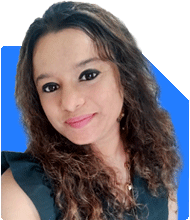41-Year-Old with 114 Lakhs Savings: How Can I Manage My Finances for the Future?
Ramalingam Kalirajan |10872 Answers |Ask -Follow
Mutual Funds, Financial Planning Expert - Answered on Feb 12, 2025
He has an MBA in finance from the University of Madras and is a certified financial planner.
He is the director and chief financial planner at Holistic Investment, a Chennai-based firm that offers financial planning and wealth management advice.... more

I leave my job just a month ago, m 41 year old . I have 66 lks in fd, 21 lks in post office scheme, 14 lks in ncd, 10 lks in ppf paying sip 4k till now , value now 23lks. Staying in my own home, 0 debt . 1 child age 9. Suggest me for my rest of life wealth management
Your current portfolio consists of fixed deposits, post office schemes, NCDs, and PPF. These are all low-risk investments. However, they may not generate enough returns for long-term wealth creation.
Below is a detailed plan to manage your wealth for the rest of your life.
Assessing Your Current Financial Position
Fixed Deposits (Rs 66 lakhs) – These provide safety but offer low returns. Interest is also taxable.
Post Office Scheme (Rs 21 lakhs) – These give slightly better returns than FDs but have lock-in periods.
NCDs (Rs 14 lakhs) – These offer fixed returns but are subject to credit risk.
PPF (Rs 10 lakhs, Rs 4,000 SIP, Value Rs 23 lakhs) – This is a safe and tax-free investment. It is good for long-term wealth building.
Debt-Free Status – This is a big advantage. You do not have any EMI burden.
One Child (9 years old) – You need to plan for education and future expenses.
Key Financial Goals to Plan For
Regular Monthly Income for Life – You need a steady cash flow for expenses.
Child’s Education & Higher Studies – Funds will be needed in the next 5–10 years.
Retirement & Medical Emergencies – You need funds to maintain your lifestyle and handle health costs.
Wealth Growth & Protection – Your wealth should grow and beat inflation.
How to Allocate Your Investments?
You need a balance between safety, returns, and liquidity. Below is a suggested allocation:
Emergency Fund (Rs 15 lakhs) – Keep this in a high-interest savings account and liquid mutual funds. It will cover unexpected expenses.
Fixed Income for Stability (Rs 30 lakhs) – Invest in a mix of corporate bonds and debt mutual funds. They offer better returns than FDs.
Equity Mutual Funds for Growth (Rs 30 lakhs) – Invest in actively managed large-cap, flexi-cap, and mid-cap funds. This will provide long-term wealth creation.
PPF Continuation (Rs 4,000 per month) – Continue investing in PPF. This will provide tax-free returns for retirement.
Child’s Education Fund (Rs 20 lakhs) – Invest in a mix of balanced advantage funds and large & mid-cap funds. This will provide steady growth for future education needs.
Why Not Fixed Deposits for Long-Term Growth?
Low Returns – FD rates do not beat inflation. This reduces purchasing power over time.
Taxable Interest – Interest earned is added to taxable income, reducing actual returns.
Limited Growth – Equity funds can provide higher returns over long periods.
Why Actively Managed Mutual Funds Over Index Funds?
Better Risk Management – Fund managers adjust portfolios based on market conditions.
Higher Growth Potential – Actively managed funds can outperform the market over time.
Downside Protection – Index funds fall in crashes, but active funds adjust to minimize losses.
Creating a Regular Monthly Income
Systematic Withdrawal Plan (SWP) – Invest in balanced advantage funds and debt funds. Withdraw monthly income as needed.
Dividend-Paying Mutual Funds – These funds provide periodic payouts. This can be part of your regular income strategy.
Fixed Income from Bonds & Debt Funds – This ensures stability and predictability.
Insurance & Healthcare Planning
Health Insurance (Rs 10–15 lakhs coverage) – Medical expenses can be high. A comprehensive health plan is necessary.
Term Life Insurance – If you do not have term insurance, get a policy to secure your child’s future.
Critical Illness & Accidental Cover – This provides extra protection against major health risks.
Final Insights
Keep an emergency fund for safety.
Invest in equity mutual funds for long-term growth.
Reduce reliance on FDs for better wealth creation.
Use a mix of debt and balanced advantage funds for stability.
Plan a systematic withdrawal for regular income.
Continue investing in PPF for tax-free wealth accumulation.
Get proper health and life insurance coverage.
With this plan, you can secure your financial future. Your wealth will grow while ensuring stability and cash flow.
Best Regards,
K. Ramalingam, MBA, CFP,
Chief Financial Planner,
www.holisticinvestment.in
https://www.youtube.com/@HolisticInvestment
You may like to see similar questions and answers below
Ramalingam Kalirajan |10872 Answers |Ask -Follow
Mutual Funds, Financial Planning Expert - Answered on Jun 30, 2024
Ramalingam Kalirajan |10872 Answers |Ask -Follow
Mutual Funds, Financial Planning Expert - Answered on Jul 19, 2024
Jinal Mehta | Answer |Ask -Follow
Financial Planner - Answered on Jul 26, 2024
Ramalingam Kalirajan |10872 Answers |Ask -Follow
Mutual Funds, Financial Planning Expert - Answered on Feb 17, 2025
Ramalingam Kalirajan |10872 Answers |Ask -Follow
Mutual Funds, Financial Planning Expert - Answered on Sep 11, 2025
Nayagam P P |10851 Answers |Ask -Follow
Career Counsellor - Answered on Dec 07, 2025
Nayagam P P |10851 Answers |Ask -Follow
Career Counsellor - Answered on Dec 07, 2025
Radheshyam Zanwar |6736 Answers |Ask -Follow
MHT-CET, IIT-JEE, NEET-UG Expert - Answered on Dec 06, 2025

Good luck.
Follow me if you receive this reply.
Radheshyam
Dr Nagarajan J S K |2576 Answers |Ask -Follow
NEET, Medical, Pharmacy Careers - Answered on Dec 06, 2025
Mihir Tanna |1090 Answers |Ask -Follow
Tax Expert - Answered on Dec 06, 2025
Ramalingam Kalirajan |10872 Answers |Ask -Follow
Mutual Funds, Financial Planning Expert - Answered on Dec 06, 2025
Radheshyam Zanwar |6736 Answers |Ask -Follow
MHT-CET, IIT-JEE, NEET-UG Expert - Answered on Dec 06, 2025
Radheshyam Zanwar |6736 Answers |Ask -Follow
MHT-CET, IIT-JEE, NEET-UG Expert - Answered on Dec 06, 2025
Radheshyam Zanwar |6736 Answers |Ask -Follow
MHT-CET, IIT-JEE, NEET-UG Expert - Answered on Dec 06, 2025
Dr Dipankar Dutta |1837 Answers |Ask -Follow
Tech Careers and Skill Development Expert - Answered on Dec 05, 2025

























